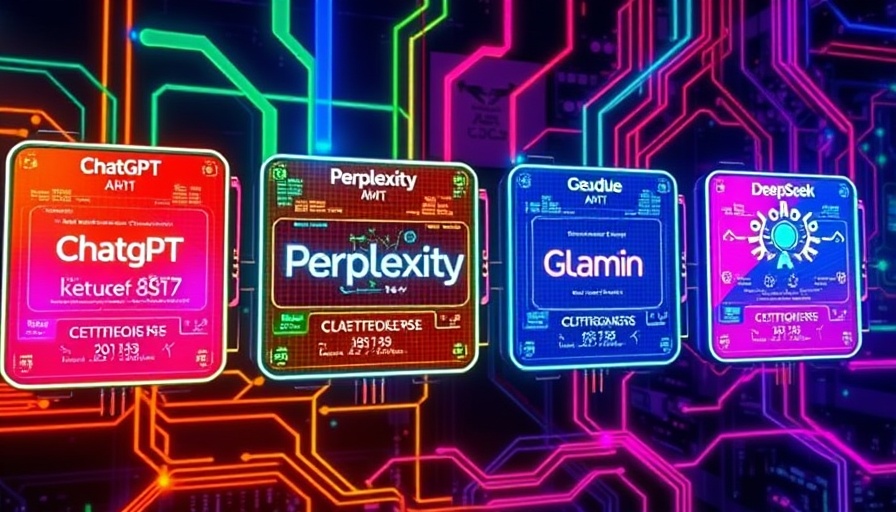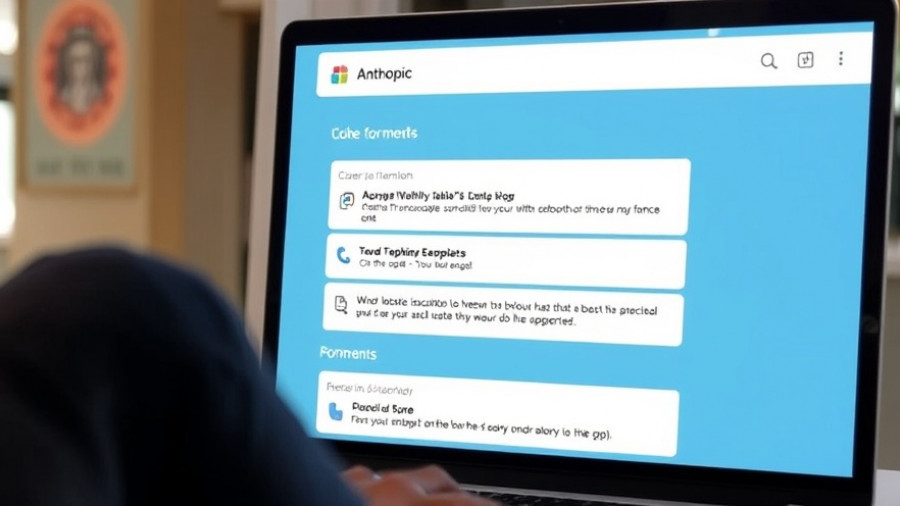
Understanding the Dynamics of AI Response Generation
As artificial intelligence steadily integrates into our daily lives, it's essential to comprehend how various AI engines generate and cite responses. Each platform represents a unique method grounded in distinct architectures, fundamentally impacting the quality and reliability of the information produced.
What Sets Different AI Engines Apart?
The generative AI landscape is diverse, with notable players like ChatGPT, Perplexity, Google's Gemini, Claude, and DeepSeek each exhibiting unique processes for answering queries. Central to understanding these differences are two core architectures: model-native synthesis and retrieval-augmented generation (RAG).
Model-native synthesis relies on a pre-trained dataset, using self-learned patterns to generate responses. While efficient, this method may produce inaccuracies known as "hallucinations"—where the AI confidently provides information lacking factual backing. In contrast, RAG systems conduct live searches for current information, offering a more reliable pathway for citation and verification.
The Mechanics Behind AI Answers
With diverse functionalities, AI platforms fluctuate between these architectures. For instance, ChatGPT is primarily model-based but can access live data through plugins, making it versatile depending on user needs. On the other hand, Perplexity integrates real-time web searches, displaying citations for every answer, thus making it compelling for research purposes.
The Role of Citations and Transparency
Understanding citation practices becomes critical for content creators. Many AI engines, such as those following retrieval-augmented practices, provide direct source links, fostering transparency. For example, Google’s Gemini, using its live search infrastructure, ensures that users often receive information backed by verifiable links. This makes Gemini particularly valuable in contexts where accurate sourcing is non-negotiable.
Comparison of Leading AI Tools
Let’s examine how the leading AI engines compare:
- ChatGPT: Favors a model-native approach but can retrieve live data with plugins, impacting citation practices.
- Perplexity: Built around live web retrieval with an exceptional focus on providing inline citations for ease of use in research.
- Google Gemini: Similarly integrates with live data, enhancing traceability and user experience by linking directly to source materials.
- Claude: Offers selective web search capabilities that can further enrich responses while prioritizing safety and user data privacy.
- DeepSeek: An emerging tool that adapts its retrieval capabilities based on regional needs and deployment specifics. This variability signifies its potential, depending heavily on integration features.
Implications for Content Creators
AI's varying methodologies create layered implications for content creators. Choosing the correct AI tool for specific tasks is paramount. Systems that access live data, such as Perplexity or Gemini, may prove more effective for obtaining timely information, while model-native systems like standard ChatGPT necessitate additional layers of verification and fact-checking.
Moreover, understanding these tools’ citation practices can help teams streamline editorial workflows—ensuring each AI-generated piece is credible and traceable. In a world where AI-generated content proliferates, such layers of scrutiny are fundamental to uphold content integrity.
The Future of Generative AI in Content Creation
The evolving landscape of generative AI platforms fosters a pressing need for content professionals to adapt their strategies. As AI technologies become increasingly sophisticated, incorporating features that ensure sourcing clarity and evidence-backed insights should be prioritized.
In light of these advancements, remaining vigilant about the tools your team employs will be crucial. Balancing efficiency with thorough verification processes sets the stage for robust content strategy in an AI-driven ecosystem. As Rand Fishkin aptly stated, the audience's attention is now the new currency for visibility; thus, creating engaging, well-cited content is the strategy that will endure.
Conclusion
In this fast-evolving AI landscape, understanding how different engines generate and cite responses is crucial. By tailoring tool selection to task requirements and fostering diligent verification processes, content creators can confidently navigate the complexities of AI-supported content production. It’s imperative for professionals to stay informed about each platform's capabilities and citation practices to maintain high content standards.
 Add Row
Add Row  Add
Add 




Write A Comment